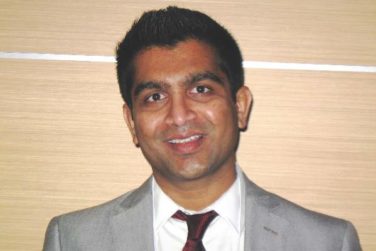AT ATA 2017
VICTORIA, B.C. (FRONTLINE MEDICAL NEWS) – Patient perception plays a large role in subjective benefit of levothyroxine therapy for hypothyroidism, suggests a double-blind randomized controlled trial reported at the annual meeting of the American Thyroid Association.
Mood, cognition, and quality of life (QoL) did not differ whether patients’ levothyroxine dose was adjusted to achieve thyroid-stimulating hormone (TSH) levels in the low-normal, high-normal, or mildly elevated range. But despite this lack of objective benefit, the large majority of patients preferred levothyroxine doses that they perceived to be higher – whether they actually were or not.
“With these data, we believe that patients should be counseled that symptoms in these areas are not reliably related to levothyroxine doses or thyroid hormone levels,” commented first author Mary H. Samuels, MD , an endocrinologist at the Thyroid & Parathyroid Center, Oregon Health & Science University, Portland.
The study was not restricted to certain groups who might have a better response to higher levothyroxine dose, she acknowledged. Two such groups are patients with more symptoms (although volunteering for the study suggested dissatisfaction with symptom control) and patients with low tri-iodothyronine (T3) levels (although about half of patients had low baseline levels).
“We encourage further research in older subjects, men, and subjects with specific symptoms, low T3 levels, or functional polymorphisms in thyroid-relevant genes,” Dr. Samuels said. “These are really difficult, expensive studies to do, and if we are going to have any hope of getting them funded and doing them, I think that we have to be much more targeted.”
One of the session co-chairs, Catherine A. Dinauer, MD , a pediatric endocrinologist and clinician at the Yale Pediatric Thyroid Center, New Haven, Conn., commented, “I think these are really interesting data because there’s this sense among patients that their dose really affects how they feel, and this is essentially turning that on its head. It’s not really clear, then, why are these patients still maybe not feeling well.”
“It will be interesting to see more data on this and … more about this business of checking T3 levels. Do we need to supplement with T3? I think we really don’t know that, especially in kids, but even in adults,” she added.
The other session co-chair, Yaron Tomer, MD , chair of the department of medicine and the Anita and Jack Saltz Chair in Diabetes Research at the Montefiore Medical Center, Bronx, N.Y., commented, “I think this study confirmed what a lot of us feel, that there is a lot of placebo effect when you treat in different ways to optimize the TSH or give T3.”
Other data reported in the session provide a possible explanation for the lack of benefit of adjusting pharmacologic therapy, suggesting that the volumes of various brain structures change with perturbations of thyroid function, he noted. “There might be true changes in the brain that affect how the patients feel. So these patients may truly not feel well. It’s just that we can’t fix it by adjusting the TSH level to very narrow margins or by adding T3,” he said.
Study details
“It is well known that overt hypothyroidism interferes with mood and a number of cognitive functions. However, neurocognitive effects of variations in thyroid function within the reference range and in mild or subclinical hypothyroidism are less clear,” Dr. Samuels noted, giving some background to the research.
“Observational studies of this question have tended to be negative but have often included less sensitive global screening tests of cognition. There are very few small-scale interventional studies,” she continued. “In the absence of conclusive data, many patients with mild hypothyroidism are started on levothyroxine to treat nonspecific quality of life, mood, or cognitive symptoms, and many additional treated patients request increased levothyroxine doses due to persistence of these symptoms.”
Dr. Samuels and her coinvestigators enrolled in the trial 138 hypothyroid but otherwise healthy patients who had been on a stable dose of levothyroxine (Synthroid and others) alone for at least 3 months and had normal TSH levels.
The patients were randomized to three groups in which clinicians adjusted levothyroxine dose every 6 weeks in blinded fashion to achieve different target TSH levels: low-normal TSH (0.34-2.50 mU/L), high-normal TSH (2.51-5.60 mU/L), or mildly elevated TSH (5.60-12.0 mU/L). Patients completed a battery of assessments at baseline and again at 6 months.
Main results confirmed that TSH targets were generally achieved, with significantly different mean TSH levels in the low-normal group (1.34 mU/L), high-normal group (3.74 mU/L), and mildly elevated group (9.74 mU/L) (P less than .05).
In crude analyses, results differed significantly across groups for only two of the dozens of measures of mood, cognition, and QoL assessed: bodily pain (26%, 11%, and 34% of patients reporting a high pain level in the low-normal, high-normal, and mildly elevated TSH groups, respectively; P = .03) and working memory on the N-Back test (86%, 58%, and 75% with a 1-back result; P = .002). However, there were no significant differences for any of the measures when analyses were repeated with statistical correction for multiple comparisons.
At the end of the study, patients were unable to say with any accuracy say whether they were receiving a dose of levothyroxine that was higher than, lower than, or unchanged from their baseline dose (P = .55 for actual vs. perceived).
However, patients preferred what they perceived to be a higher dose (P less than .001 for preferred vs. perceived). In the group perceiving their end-of-study dose was higher, the majority of patients (68%) preferred that dose, and in the group perceiving their end-of-study dose was lower, most (96%) preferred their baseline dose.
The sample size may not have been adequate to detect very small effects of changes in levothyroxine dose, acknowledged Dr. Samuels, who disclosed that she had no relevant conflicts of interest. Additionally, patients were predominantly female and younger, and heterogeneous with respect to thyroid diagnosis and length of levothyroxine therapy.





